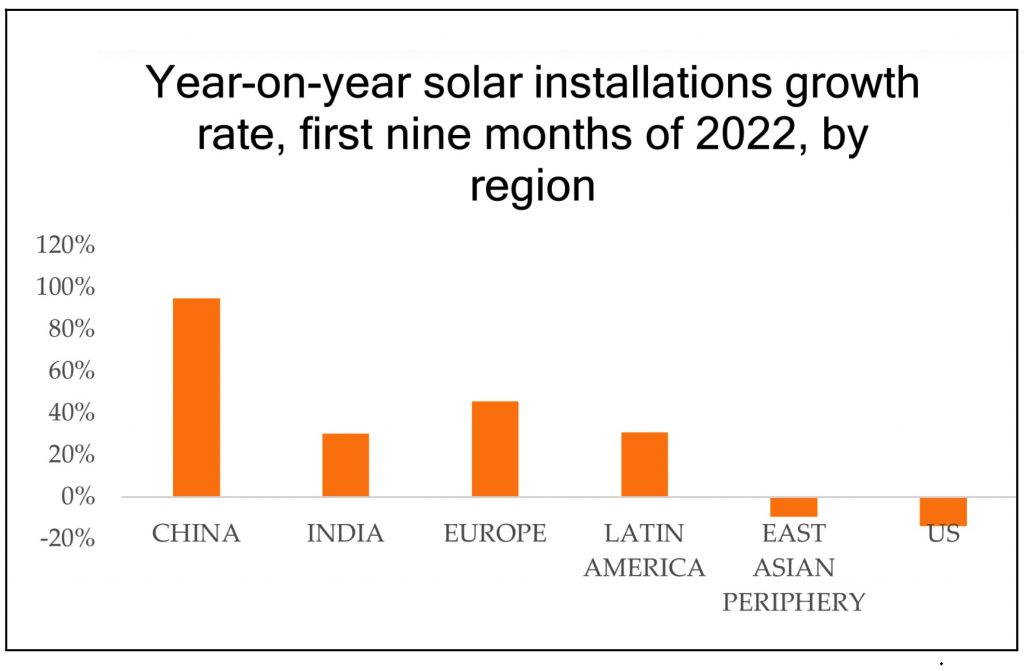.. SUSTAINABLE DEVELOPMENT ..
A survey by CPNN
Here are two graphs published in the last few weeks that tell an important economic story.
The first graph was published in a report of the International Energy Agency (IEA) on December 6. We see that solar energy (photovoltaic) is predicted to surpass other energy sources within the next 3 years. Nuclear power is not shown in the graph, but it accounted for about 10% of global energy generation in 2019, down from a peak of 16.5% in 1997.

(click on image to enlarge)
According to an article published December 12 in Yahoo Finance, improvements in technology and increased economies of scale, have substantially decreased solar energy costs. While the cost of utility scale photovoltaic fixed tilt installation was $4.75 per watt in 2010, the cost was just $0.94 per watt in 2020. And for the future, it is likely solar costs will decline further.
According to an article in China Daily on December 26 quoting the IEA, the cost of photovoltaic production is lowest in China: costs in China tend to be 10 percent lower than in India, 20 percent lower than in the US and 35 percent lower than in parts of Europe.
(Continued in right column)
Are we making progress in renewable energy?
(Continued from left column)
The second graph was published by the website Cleantechnica on December 14, based on a report from Rethink Energy. We see that China and the United States were at the opposite extremes of solar power installation last year. China increased its solar installation more than anywhere else in the world, while the United States actually decreased its installations.

According to an article in the Business Wire on January 3, China exported solar cells to more than two hundred countries and regions around the world in 2021. The publisher’s analysis shows that India, Turkey, Vietnam, South Korea, Germany, Malaysia, Cambodia, Thailand, the Netherlands and the Philippines are China’s major solar cell export destinations by export volume.
Solar exports from China to Europe are expected to increase as a result of the energy inflation and energy insecurity caused by the Russia-Ukraine tensions, as reported by the South China Morning Post on January 2. As for the United States, imports from China are reduced because Washington has imposed steep import tariffs on Chinese solar panels and banned solar energy components from China’s Xinjiang region over concerns of forced labour. “Chinese solar panels manufacturers will continue facing import restrictions imposed by the US government in the foreseeable future.”
Another impediment in the United States is the opposition to solar power by the right-wing Republicans, as described by the Los Angeles Times on December 13.